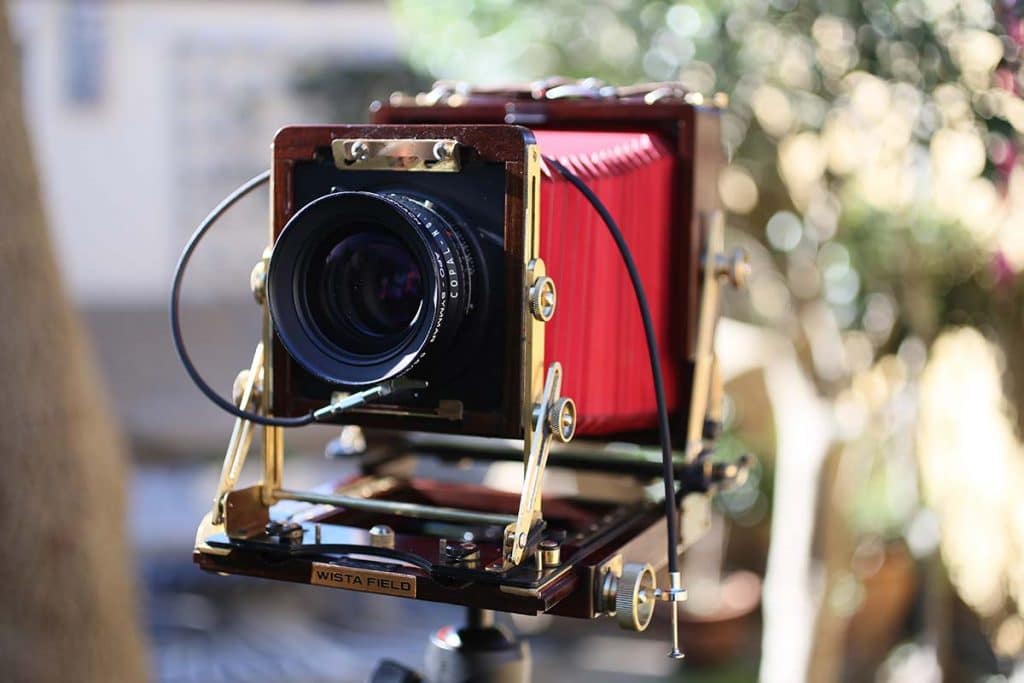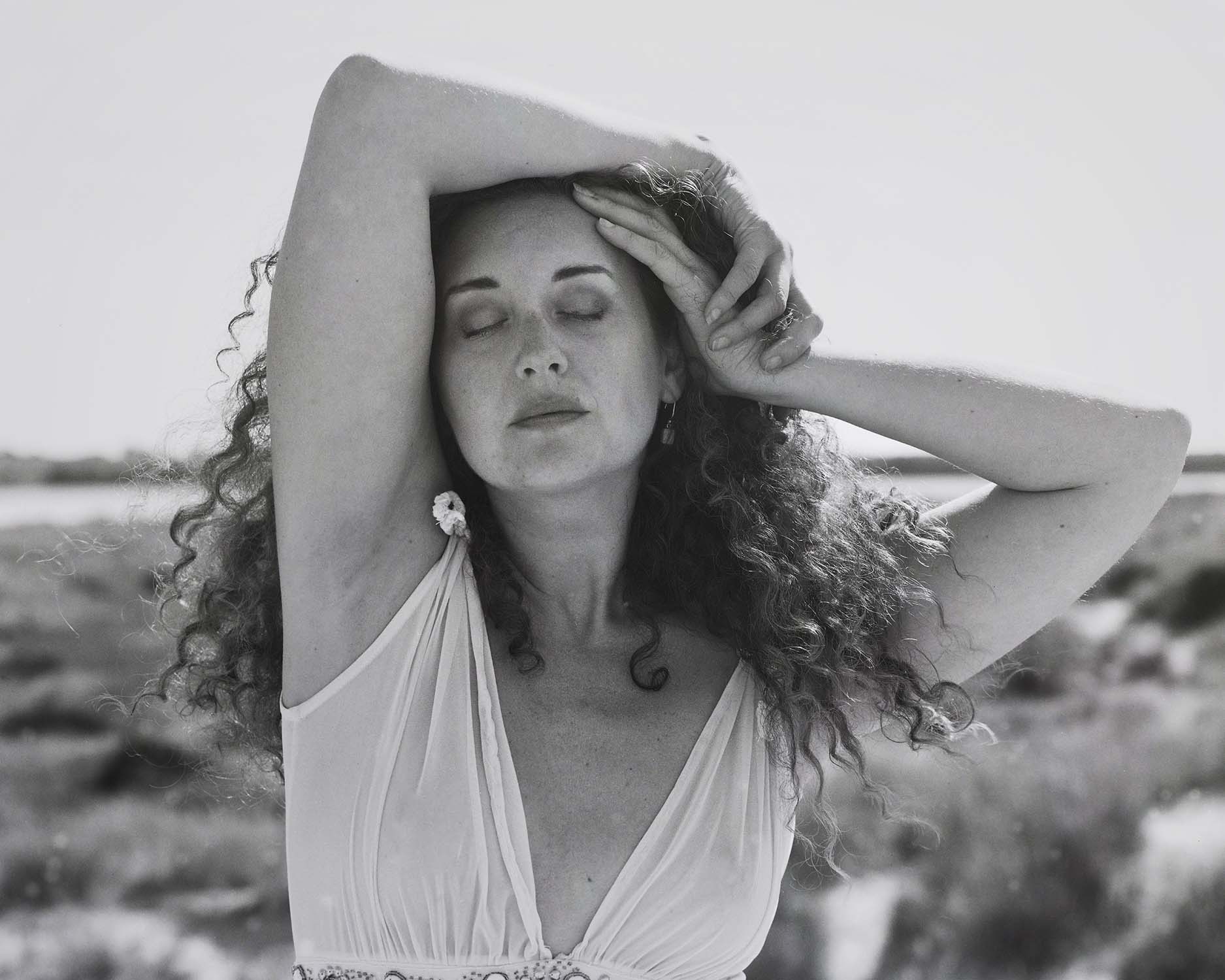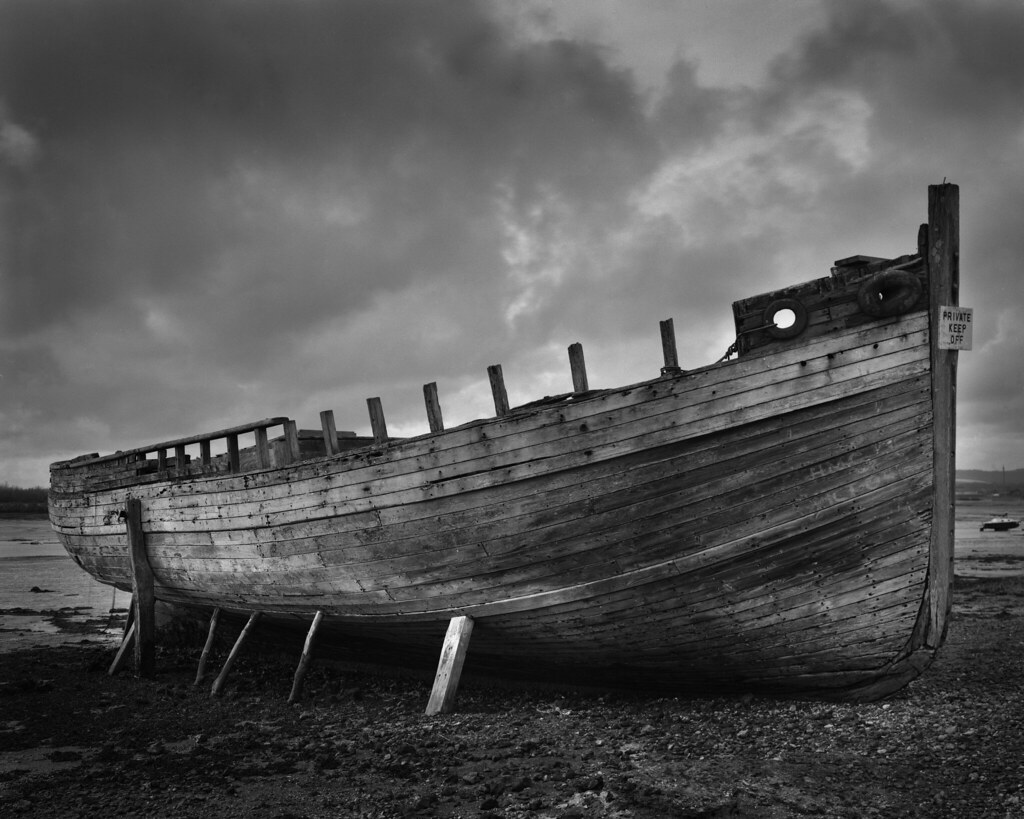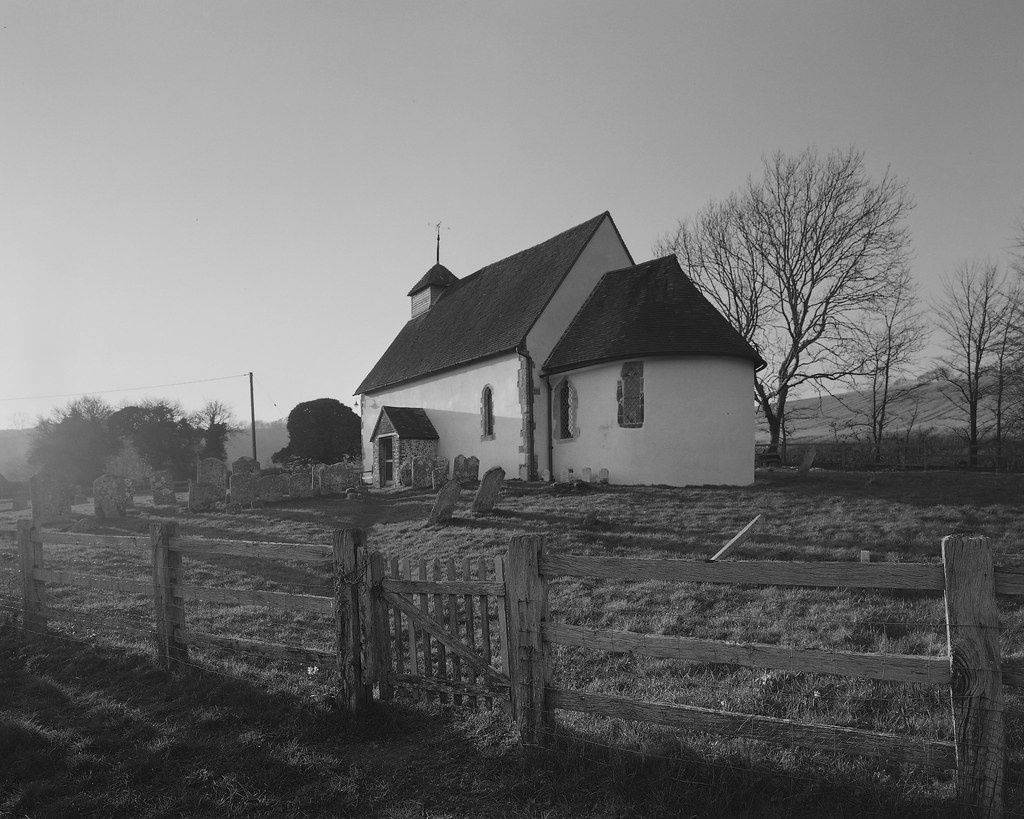
I love working with 4×5 cameras. Although I shoot digital to make a living, 4×5 is the format I shoot for pleasure. There is no more enjoyable way to pursue traditional photography than with a wooden field camera like the Wista 45DX. I won’t pretend that using such a camera is an entirely logical decision. The film is expensive and the cameras are slow to use. Collecting all those accessories to get a workable system together requires a fair bit of ebay expertise.
Photographers as a group are often guilty of projecting properties onto cameras and film formats. We romanticise certain cameras and lenses and the experience of working with them. The truth is film cameras do not necessarily contain any magic within their light tight frame. But if you are shooting for pleasure – an ‘amateur’ in its truest sense, you don’t need any reason for shooting a particular camera other than you enjoy doing it and you like the results. However, unlike digital there is a very real difference in the look of different film formats. 4×5 represents an image area almost 16 times bigger than that of a 35mm frame. That has a huge impact on the aesthetic qualities of large format, not just in resolution but also in depth of field and overall rendering.
I enjoy the experience of shooting large format. The pleasure of using a beautifully made piece of machinery, simple and elegant, full of quiet potential. I feel very connected to the history of photography and the photographers who came before me. Craftsmen and artists who have been using cameras very similar to this for over 100 years. There is great satisfaction in working this way. Large format photography rewards a meticulous, thoughtful approach to image making.
Background
I had been shooting 5×4 for over half a decade before I bought my Wista 45DX. I own a Toyo 45C monorail which is an excellent camera, but not one you could easily haul up a steep hill. When the first lockdown came and my photography business was largely shut down. I decided that I would shoot some landscapes local to me to keep myself occupied and my photography skills sharp. A 4×5 field camera seemed to fit the bill. Especially as I could use all of my existing lenses. Eventually, I found a Wista 45DX in rosewood after scouring what felt like every used camera website in the UK. I already had three lenses. So I ordered some Linhof lens boards, a backpack to fit everything into, and started looking for local locations.
Overview
The Wista 45DX is undeniably a beautiful camera. Mine is made from rosewood and has lacquered brass fittings. I ordered a set of red bellows from Custom Bellows in Birmingham to compliment its classic looks. It gets admiring comments whenever I use it. I have never suffered any of the hostility you can get if you are carrying a big DSLR and look too much like a hardened pro. The worst thing that can happen is someone tries to strike up a conversation just as you are waiting for the perfect light and don’t want to be disturbed!
The Wista is about as light as a view camera can get before they start to become unstable. Saving weight always helps when you might be hiking some distance with your camera. But bear in mind that you have to carry a lot of other equipment when you are shooting in large format. In the great scheme of things, lightness is probably not as important as the camera’s ability to fold right down and fit in a bag and the speed at which you can set it up. The camera is just a small proportion of the total weight of equipment you have to carry. The weight saved by a camera that is light but too flimsy will not be noticeable in a bag full of lenses and film holders, but will be noticed in your negatives.
Setting Up
The Wista is quick and easy to set up. When folded up the camera locks shut with a magnet between the rear standard and the bed. To set up you just pull it apart firmly until the back clicks into place. Then lift the front standard until it too clicks into place, then pull it out the standard and centre it. There is no messing about with a bolt that screws into several different holes in the bed as with the Intrepid or Chamonix. The Wista has a double track that will take lenses from 65mm to 300mm. You simply slide the front standard into the correct position. This makes changing lenses quick and easy. The only thing it is lacking is a built in spirit level on the rear standard. Many people prefer a more accurate separate level anyway, so this is not necessarily a great loss.
The focus knobs and other controls are all made from milled brass. This looks really classy, but in cold weather they become almost freezing to the touch and can really suck the heat out of your hands if you are not wearing gloves.
The Ground Glass
The ground glass and fresnel has a reputation for being one of the brightest around. It is often possible to focus and compose without the aid of a dark cloth, and it really snaps into focus. The only thing to be aware of is you have to look at the ground glass straight on or you can’t see any image at all.
The camera does not have an international back. If you want to fit accessories like a medium format film holder the spring back opens extra wide and you can slide them in. Wista and Toyo both do medium format backs specially designed for this.
Movements are distributed as follows. Both standards have tilt and swing, but rise and fall is on the front standard and shift (side to side movement) is on the rear standard. There is more than enough flexibility for shooting most things. It does utilise base tilt instead of the simpler to use axis tilt that most monorails use. This means that when you tilt the lens forward you lose focus, so you have to wind the focus back before you can judge the tilt. It’s not as easy as axis tilt where you can adjust the tilt and just check the ground glass as you go.
Maximum extension is 300mm so a 300mm lens will only focus at infinity. Minimum extension is 51mm, so you could fit a 65mm lens without a recessed board. Lenses in the 90mm to 210mm range work well with the camera.
Lenses
I own 75, 125 and 210mm lenses. The 125mm works brilliantly on the camera. It can be reversed and folded into the lens body to save space in my bag. The 210mm f5.6 is good but getting towards the limit of how big a lens I would like to put on the front standard. The 75mm fits with no problems but the bellows are compressed. You can only use a little rise and fall without risking creasing the bellows. My lens (a 75mm F5.6 super angulon) doesn’t actually have enough coverage for this to be a major problem. If you had a lens that allowed greater movements you would need to mount the lens in a recessed board so the bellows would be extended and more flexible.
If you are a photographer coming from digital or even smaller film formats, I am not sure you could describe any large format camera as ‘intuitive’ to use. The ergonomics are a product of the traditional materials and the necessity of having a camera that folds down. Having said that I found everything logical, easy to get used to, and quick to learn. Most importantly I have never has issues with focusing. The ground glass is excellent, bright and really snaps into focus. It allows you to focus at wider apertures with confidence.
Conclusions
The acid test for any camera is to ask yourself whether you would buy another one if it got stolen or broken. I would certainly be happy to buy another Wista 45DX. There are photographers that have used these cameras over decades, and if you can live a couple of rather minor limitations, this is a faithful workhorse that won’t let you down.
Pros
- Well made and beautiful to look at
- Excellent bright ground glass and fresnel
- Can take wide angle lenses down to 65mmwithout recessed boards
- Takes widely available Linhof boards
- Lightweight
Cons
- 300mm bellows extension could be limiting
- There are more solid cameras out there but it is certainly good enough
- Bellows not interchangeable. They limit movements with very wide lenses.
- No international back, but has a wide opening back to get around this. Wista do make another version that has the back.





Great review of the Wista 45DX, also enjoyed you wonderful photos. I love the red bellows, matches well indeed on the DX. I thought of ordering a set. Did you install them yourself?
-Thomas
Hi Thomas! Yes, I did change the bellows myself. The old bellows just pulled off the wood and I just glued the new ones on in their place.
Can across your work with the wista field camera while researching. I’ve been using a 6×12 back with Linholf technicarden for some years but it’s heavy. I inherited a wista from my dad and would like to adapt this to accommodate the 6 x12 back. Any thoughts.
Lovely shot of Bosham which was one of my dad favourite photo locations
David Hatfull
david@diemphoto.co.uk
http://www.diemphoto.co.uk/fineartprints
It depends on which variant of the Wista you have. Most don’t come with an international back, instead your roll film holder is supposed to slide under the ground glass. The spring back opens extra wide for this purpose. Wista made roll film holders that have what a plate on the back so you can fit in a roll film holder without scratching the ground glass. I guess the first thing to do is check that you can fit your 6×12 roll film holder under the ground glass. wista.co.jp is still going so perhaps they sell the spring back with international back fitted if it doesn’t. Alternatively there are some places that sell a split darkslide so you can get two panoramic exposures from a 4×5 film holder. Hope this is helpful!
I own a Wista 45DX. I agree with everything written except for one item. I use Funinon lenses and have a 400mm by them made for short bed view cameras. They have not been sold here for years but are often found on eBay. I’ve also created a backpack to hold everything with foam partitions and use a Gitzo carbon tripod. It’s heavy but well worth the struggle. There is room in the folded camera for a 180mm 5.6 lens.